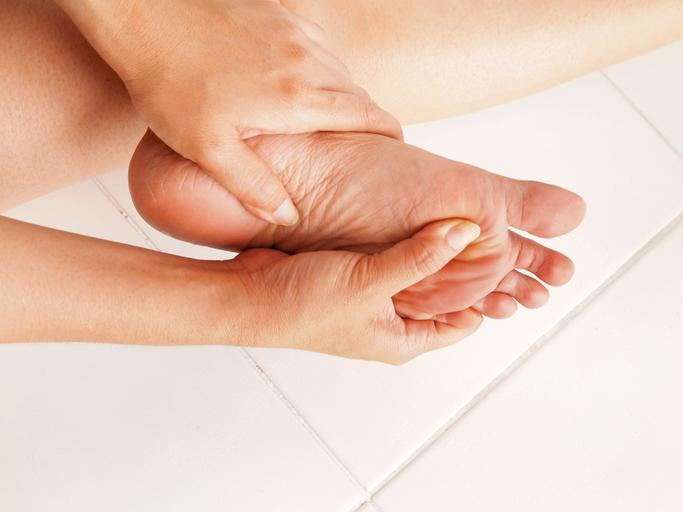Plantar Fasciitis: What is It About?
posted: Jan. 31, 2017.

The sole of the foot is referred to as the plantar area. The plantar fascia, a bowstring-like ligament stretching underneath the sole, is known to be the largest ligament in the human body. Plantar fasciitis is an inflammation to the plantar fascia ligament. It is most commonly caused by strain injury, causing micro tears to the ligament as it attaches to the heel bone or other areas of tightness on the sole of the foot. Commonly mistaken for Baxter’s neuritis (a nerve entrapment in the heel), plantar fasciitis can be treated by measures that decrease the associated inflammation and avoids re-injury.
This foot condition is diagnosed based on the history of the condition as well as the physical examination done by the podiatrist.
The main symptoms of plantar fasciitis include:
- Foot pain
- Heel pain
- Stiffness
- Tenderness
Plantar fasciitis can occur alone or it can also be related to other underlying diseases. Chronic plantar fasciitis (when condition reaches over one year) can become plantar fasciosis due to avascular scarring of the plantar fascia. It becomes painful due to poor blood supply to the scarred tissues and is resistant to treatment that reduces inflammation typically applied for plantar fasciitis.
What causes plantar fasciitis?
Plantar fasciitis is most commonly caused by repetitive strain injury to the ligament of the sole of the foot. Such strain injury can be caused by excessive walking or running, inappropriate foot gear as well as jumping injury from landing. Plantar fasciitis can also be caused by certain diseases such as reactive arthritis and ankylosing spondylitis.
What are the signs and symptoms of plantar fasciitis?
This foot condition can cause pain and tenderness at the bottom of the foot. The tenderness is usually directed towards the heel, but the entire sole of the foot can also be affected. A sign of abnormal tension or tightness than can lead to plantar fasciitis is a bony prominence also known as heel spur and this develops where the inflamed plantar fascia attaches to the heel bone (calcaneus).
When you have plantar fasciitis, you may experience difficult in walking and running. It can also make the foot feel particularly stiff and sensitive especially in the morning or when rising after sitting and getting out of the car. You may also have problems walking barefoot on hard surfaces. At certain times, the bottom of the foot can feel warm, tender and swollen.
Our podiatrist, Sheldon Nadal, DPM, can certainly help answer your questions about plantar fasciitis. Setup an appointment with him today.